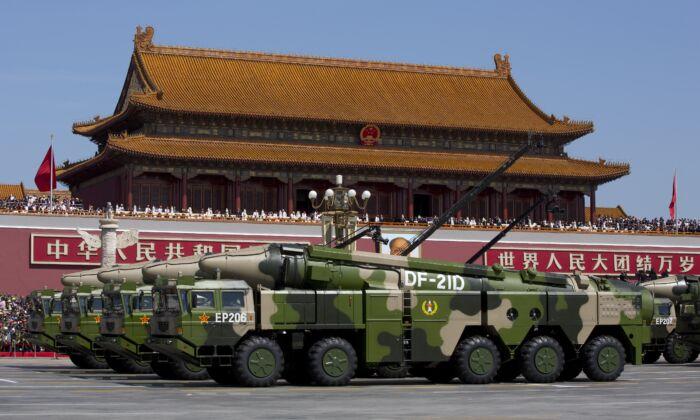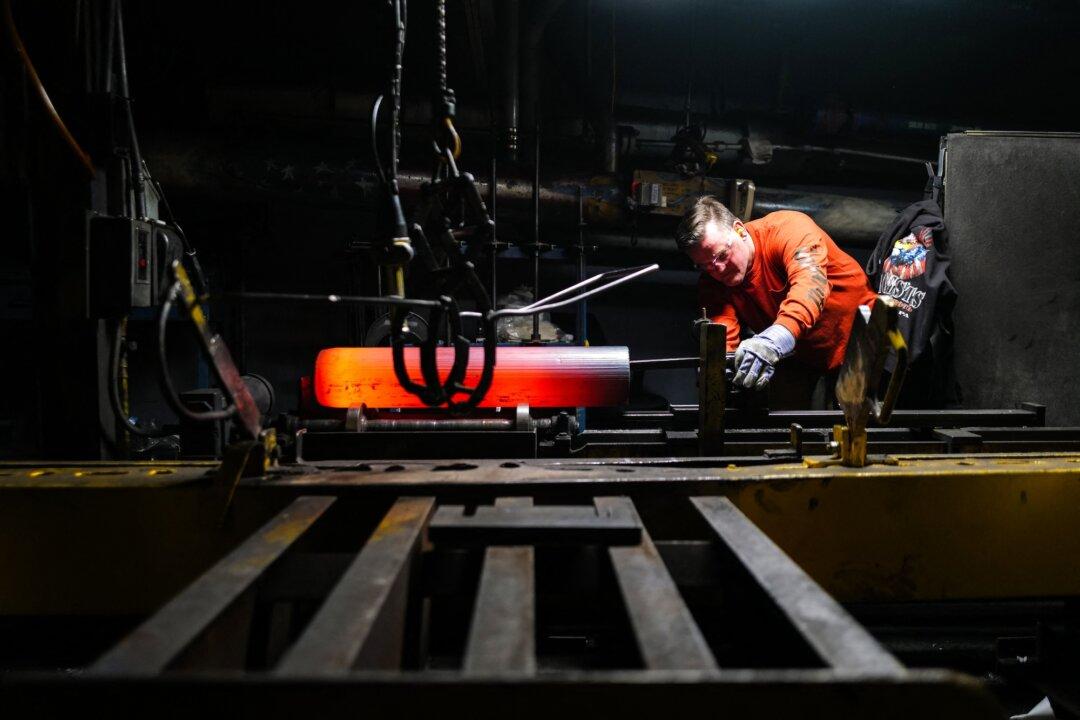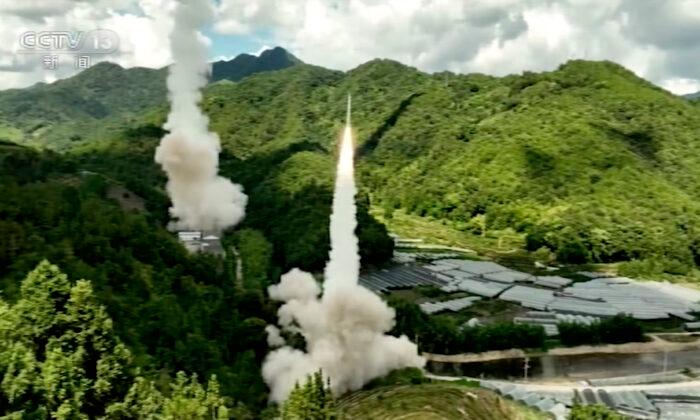Then during a June 2 forum of the Air Force Association Mitchell Institute for Aerospace Studies, U.S. Air Force Global Strike Command Commander General Timothy Ray stated, regarding China’s strategic modernization, “Over the last six months we started to see changes, it’s not that we saw changes, it’s the number of times that assessments fell short of what they were actually accomplishing.”
A potential stark illustration of the degree to which past assessments “fell short” came in a July 1 Washington Post article reviewing recent commercial high resolution satellite imagery of China, by Dr. Jeffery Lewis, director of the East Asia Nonproliferation Program at the Center for Nonproliferation Studies, part of the Middlebury Institute of International Studies, and Decker Eveleth, a Reed College graduate student.
Near the Gansu Province city of Yumen, they found 109 new silos under construction for intercontinental ballistic missiles (ICBMs). This major new People’s Liberation Army Rocket Force (PLARF) project likely prompted, in part, the warnings from Admiral Richard and General Ray.
This article noted PLARF efforts in other regions produced a total of 145 new silos under construction for new ICBMs. The ICBM most likely to go in the Yumen silos is a version of the 8,700 mile (14,000 km) range DF-41 made by China Aerospace Science and Technology Corporation (CASC).
Then in a July 4 statement on his Twitter page, Eveleth revised his count: 120 silos at Yumen and 16 silos at Jilantai, Inner Mongolia, for the DF-41 ICBM, and 18 operational silos for the liquid fueled CASC DF-5 ICBM, with another 8 DF-5 silos under construction.
One might conclude that the U.S. intelligence community has been closely monitoring the PLARF’s new silo construction, affirmed by recent commercial satellite imagery.
What remains to be determined is whether there will be more PLARF silo ICBM brigades, or whether construction efforts will stress new railroad-based ICBM brigades, or both.
One alarming prospect of the completion of 145 or 136 silos containing DF-41 ICBMs would be the quadrupling of China’s nuclear warheads over the next one to three years instead of the next decade as mentioned by Admiral Richard.

DF-41 production likely began early in the last decade. The 2015 emergence of the DF-41-based Long March-11 solid fuel space launch vehicle suggests that DF-41 production may be supported by a dedicated second CASC production line.
China is credited in open sources of having about 350 nuclear warheads. The DF-41 may carry six to ten warheads, meaning an additional 136 new silo-based DF-41s could add 816 to 1,360 warheads. To that, one must add warheads from other ICBMs and submarine launched ballistic missiles (SLBMs).
Assuming that the DF-5 ICBM silos are now filled with the three-warhead equipped DF-5B, there could be 54 more warheads. An additional 72 warheads would be carried by 72 JL-2 SLBMs aboard six Type 094 nuclear ballistic missile submarines (SSBNs). These will be followed by the Type 096 SSBN, which informal Chinese sources suggest will be armed with the 6-warhead capable JL-3 SLBM.
By the mid-2020s the PLA Air Force will have its new Xian Aircraft Corporation “H-20” strategic stealth bomber, based in part on stolen U.S. B-2 stealth bomber technology, capable of carrying multiple long-range nuclear-armed cruise missiles.
So, it is possible that by 2025, China’s ICBM and SLBMs warhead inventories alone could exceed 1,400. That is greater than the 1,357 warheads deployed by the United States, according to the latest State Department count, revealed on March 1, 2021 in accordance with the recently extended 2010 New START nuclear weapons limitation treaty with Russia.
Reacting to the revelation of the new silo construction, some U.S. analysts have suggested that the PLARF may not fill all the new silos with ICBMs, inasmuch as it constructed decoy silos for its earlier DF-5 ICBMs. Jeffery Lewis suggested China may be building up its nuclear force in reaction to “U.S. investments and missile defense.”
The Chinese Communist Party (CCP) has its own agenda well beyond responding to the United States. Filling all new silos would offer China more options for nuclear coercion against the United States. This would be all the more so if China and Russia combined their nuclear forces for coercion. Such offensive missile cooperation would follow from their near decade of missile defense cooperation.
It also has to be considered that the CCP likely has long been dissatisfied with simply having a small number of nuclear weapons to assure “retaliation” and thus deter nuclear attacks from the United States and Russia.
A decades-long CCP rejection of even the simplest nuclear transparency and arms control is an obvious indicator it wants to build many more nuclear weapon systems.
In the last decade China has built over 2,000 theater ballistic missiles and cruise missiles, many of which are nuclear capable. This means the CCP saw fit to build a theater missile force larger than any other country. It also is a strong indicator that the CCP may now be seeking a superior intercontinental nuclear force.
A superior nuclear force would be consistent with CCP goals of deterring the United States from countering a Chinese invasion of Taiwan, and then displacing the United States as the most powerful state in Asia. It would also be necessary for the CCP’s goal of becoming the world’s military hegemon by mid-century.
If the Biden administration is truly serious about deterring conflicts with China, and about strengthening U.S. alliances, it should offer a far more detailed public assessment of China’s nuclear weapons buildup.
It may dash the Biden administration’s arms control dreams, but leaving the New Start treaty, and compensating with a buildup of modernized U.S. nuclear forces, is far preferable to the disasters that would follow from failure to deter Chinese-Russian nuclear blackmail or attack.





